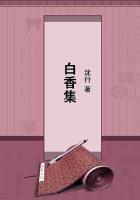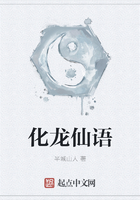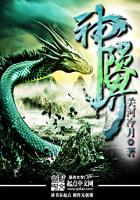And yet there is one, an Anthrax, A. sinuata (Cf. "The Life of the Fly": chapters 2 and 4.--Translator's Note.), who will come later on, in the height of summer, and succeed, invisible bit of thread that she is, in ****** her way to the grub through the thickness of the door and the web of the cocoon. In many cells, mischief of another kind has already been done. During the progress of the works, an impudent Midge, one of the Tachina-flies, who feeds her family on the victuals amassed by the Bee, hovers in front of the galleries. Does she penetrate to the cells and lay her eggs there in the mother's absence? I could never catch the sneak in the act. Does she, like that other Tachina who ravages cells stocked with game (The cells of the Hunting Wasps.--Translator's Note.), nimbly deposit her eggs on the Osmia's harvest at the moment when the Bee is going indoors? It is possible, though I cannot say for certain. The fact remains that we soon see the Midge's grub-worms swarming around the larva, the daughter of the house. There are ten, fifteen, twenty or more of them gnawing with their pointed mouths at the common dish and turning the food into a heap of fine, orange-coloured vermicelli. The Bee's grub dies of starvation. It is life, life in all its ferocity even in these tiny creatures. What an expenditure of ardent labour, of delicate cares, of wise precautions, to arrive at...what? Her offspring sucked and drained dry by the hateful Anthrax; her family sweated and starved by the infernal Tachina.
The victuals consist mostly of yellow flour. In the centre of the heap, a little honey is disgorged, which turns the pollen-dust into a firm, reddish paste. On this paste the egg is laid, not flat, but upright, with the fore-end free and the hind-end lightly held and fixed in the plastic mass. When hatched, the young grub, kept in its place by its rear-end, need only bend its neck a little to find the honey-soaked paste under its mouth. When it grows stronger, it will release itself from its support and eat up the surrounding flour.
All this is touching, in its maternal logic. For the new-born, dainty bread-and-honey; for the adolescent, dry bread. In cases where the provisions are all of a kind, these delicate precautions are superfluous. The victuals of the Anthophorae and the Chalicodomae consist of flowing honey, the same throughout. The egg is then laid at full length on the surface, without any particular arrangement, thus compelling the new-born grub to take its first mouthfuls at random. This has no drawback, as the food is of the same quality throughout. But, with the Osmia's provisions--dry powder on the edges, jam in the centre--the grub would be in danger if its first meal were not regulated in advance. To begin with pollen not seasoned with honey would be fatal to its stomach. Having no choice of its mouthfuls because of its immobility and being obliged to feed on the spot where it was hatched, the young grub must needs be born on the central mass, where it has only to bend its head a little way in order to find what its delicate stomach calls for. The place of the egg, therefore, fixed upright by its base in the middle of the red jam, is most judiciously chosen. What a contrast between this exquisite maternal forethought and the horrible destruction by the Anthrax and the Midge!
The egg is rather large for the size of the Osmia. It is cylindrical, slightly curved, rounded at both ends and transparent. It soon becomes cloudy, while remaining diaphanous at each extremity. Fine lines, hardly perceptible to the most penetrating lens, show themselves in transverse circles. These are the first signs of segmentation. A contraction appears in the front hyaline part, marking the head. An extremely thin opaque thread runs down either side. This is the cord of tracheae communicating between one breathing-hole and another. At last, the segments show distinctly, with their lateral pads. The grub is born.
At first, one would think that there was no hatching in the proper sense of the word--that is to say, no bursting and casting of a wrapper. The most minute attention is necessary to show that appearances are deceptive and that actually a fine membrane is thrown off from front to back. This infinitesimal shred is the shell of the egg.
The grub is born. Fixed by its base, it curves into an arc and bends its head, until now held erect, down to the red mass. The meal begins. Soon a yellow cord occupying the front two-thirds of the body proclaims that the digestive apparatus is swelling out with food. For a fortnight, consume your provender in peace, my child; then spin your cocoon: you are now safe from the Tachina! Shall you be safe from the Anthrax' sucker later on? Alack!















